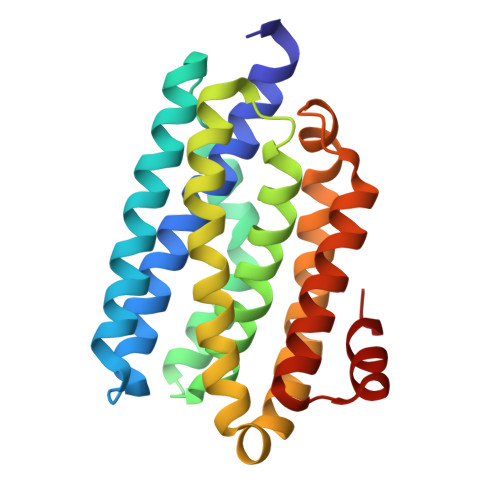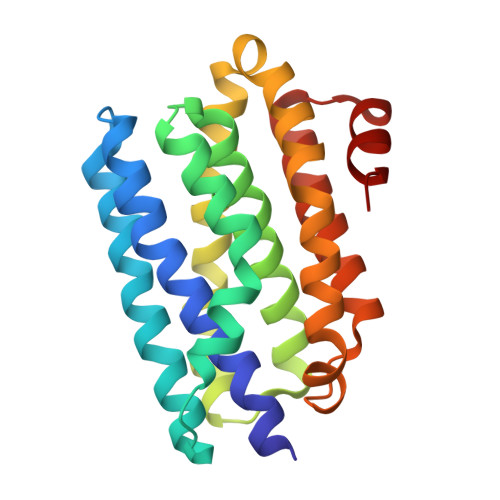Structural insights into the catalytic mechanism of aldehyde-deformylating oxygenases.
Jia, C., Li, M., Li, J., Zhang, J., Zhang, H., Cao, P., Pan, X., Lu, X., Chang, W.(2015) Protein Cell 6: 55-67
- PubMed: 25482408
- DOI: https://doi.org/10.1007/s13238-014-0108-2
- Primary Citation of Related Structures:
4QUW, 4RC5, 4RC6, 4RC7, 4RC8 - PubMed Abstract:
The fatty alk(a/e)ne biosynthesis pathway found in cyanobacteria gained tremendous attention in recent years as a promising alternative approach for biofuel production. Cyanobacterial aldehyde-deformylating oxygenase (cADO), which catalyzes the conversion of Cn fatty aldehyde to its corresponding Cn-1 alk(a/e)ne, is a key enzyme in that pathway. Due to its low activity, alk(a/e)ne production by cADO is an inefficient process. Previous biochemical and structural investigations of cADO have provided some information on its catalytic reaction. However, the details of its catalytic processes remain unclear. Here we report five crystal structures of cADO from the Synechococcus elongates strain PCC7942 in both its iron-free and iron-bound forms, representing different states during its catalytic process. Structural comparisons and functional enzyme assays indicate that Glu144, one of the iron-coordinating residues, plays a vital role in the catalytic reaction of cADO. Moreover, the helix where Glu144 resides exhibits two distinct conformations that correlates with the different binding states of the di-iron center in cADO structures. Therefore, our results provide a structural explanation for the highly labile feature of cADO di-iron center, which we proposed to be related to its low enzymatic activity. On the basis of our structural and biochemical data, a possible catalytic process of cADO was proposed, which could aid the design of cADO with improved activity.
Organizational Affiliation:
National Laboratory of Biomacromolecules, Institute of Biophysics, Chinese Academy of Sciences, Beijing, 100101, China.
















